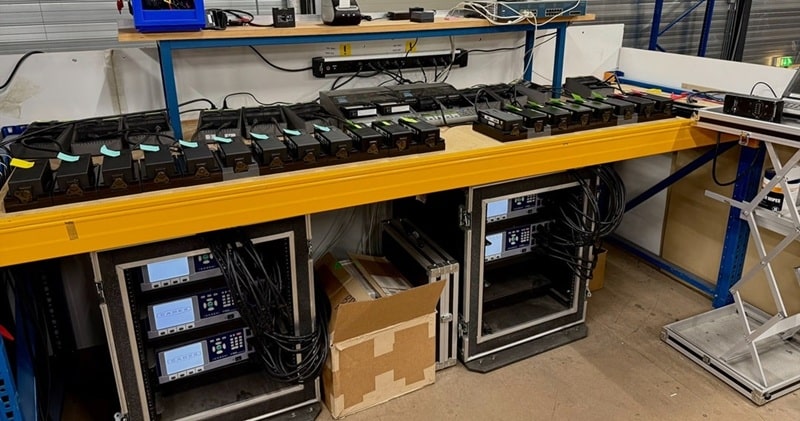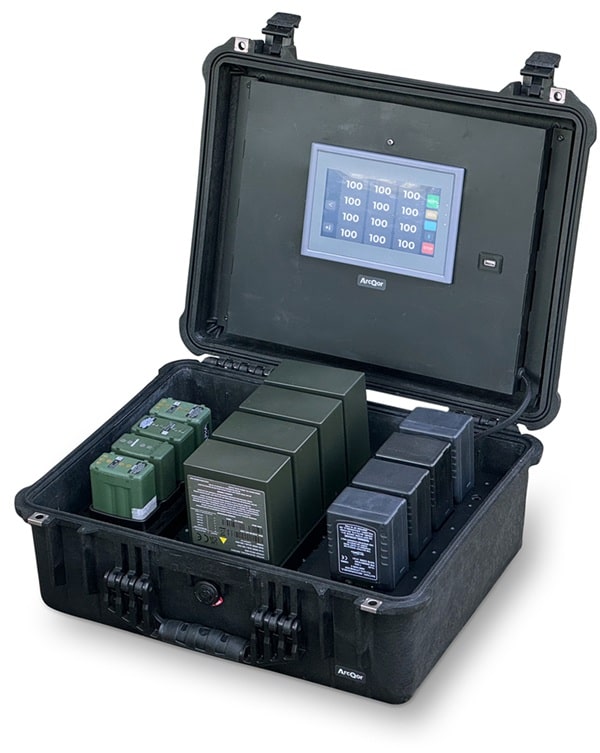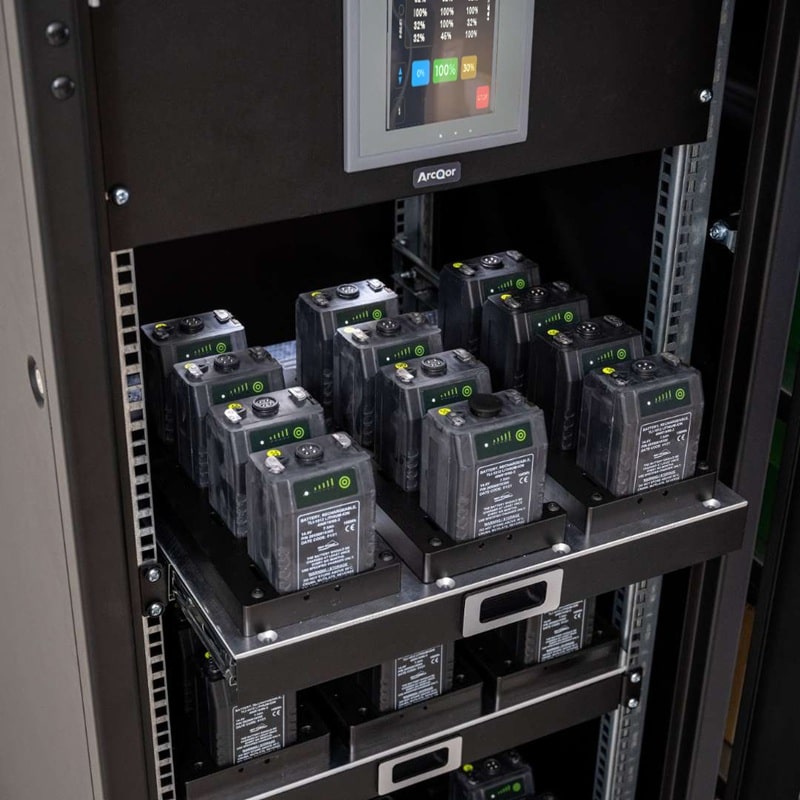“How do you determine the condition of a battery?” This was the question the Dutch Marine Corps asked Elfa. It turned out to be a challenge to accurately assess the condition of the batteries used in the NIMCIS communication system. We were tasked with analysing, charging, and evaluating these batteries.

With specially developed equipment, the State of Health of batteries can now be determined. At a glance, it becomes clear whether a battery is still fit for operational use, suitable only for training, or should be decommissioned.
The project was named 3C: Check, Charge, Clean up.
Elfa looks beyond the standard. We offer innovative and dependable energy solutions that can be applied directly in the field. This way, we support every mission with solutions that enhance safety and improve operational effectiveness.
Are you curious to see how Elfa can support you? Fill in the contact form below, one of our experts will contact you to discuss your questions.
Imagine a vehicle fitted with various chargers from different brands. Each has its own power rating and size, requires separate mounting plates, and uses different cables. The result? A jumble of equipment, costly to purchase and inconvenient to use.
There is a better way. A user presented this situation to Elfa as a challenge. Together with a market partner, we developed an entirely new family of battery chargers. Thanks to interchangeable adapter plates, different batteries can now be connected to a single charging system.

This system comes in three variants:
Additional advantages: The chargers can reduce batteries to 30% state of charge, as required for transporting lithium batteries under IATA and ADR regulations. In addition, the compact analysers determine a battery’s status with

Together with users and partners, Elfa develops energy solutions that perfectly match real-world needs. When standard products fall short, we provide smart and reliable alternatives that make every mission better, safer, and more effective. We offer tailored advice and work with you to find the best solutions for your military applications.
Fill in the contact form below. One of our specialists will get in touch with you as soon as possible.
Although LiFePO4 batteries offer many advantages, they also come with some disadvantages. For instance, the upfront cost is clearly higher compared to lead-acid or other lithium-ion alternatives. Additionally, the product range is more limited: not all power ratings, sizes, or shapes are widely available, which may require custom solutions in some cases.
LiFePO4 batteries also perform less effectively at very low temperatures, which can make them harder to use in cold environments. That said, the advantages of LiFePO4 technology should not be overlooked. These batteries require no maintenance, can be 100% deeply discharged, and offer up to five times more charge cycles than lead-acid batteries.
The best way to charge a NiMH battery is by using a suitable charger that is specifically designed for NiMH technology. These chargers provide a controlled charging current and automatically shut off once the battery is fully charged, preventing overcharging. They are commonly used to recharge NiMH AA and AAA batteries.
Fast chargers can charge the battery in a few hours but put more stress on the cells due to increased heat generation. Standard chargers take longer but are gentler on the battery, helping to extend its lifespan. Lifespan refers to the period during which a NiMH battery remains usable and performs well.
It is important to always fully charge the battery and avoid storing it empty for extended periods. This helps to maintain the battery’s capacity and significantly prolongs the life of the NiMH battery. Elfa supplies both NiMH batteries and reliable chargers for every application.
Lithium iron phosphate (LiFePO4) batteries and cells are known for their low fire hazard. This battery chemistry is widely recognized for its high level of safety. Unlike other lithium-ion variants, LiFePO4 cells are extremely thermally stable and therefore virtually non-flammable. They can withstand high temperatures without exploding or catching fire. Even in cases of improper charging or mechanical damage, the risk of fire remains minimal. This makes the technology particularly suitable for a wide range of applications where reliability and safety are essential.
In short: LiFePO4 batteries offer energy storage with a very low fire hazard—providing peace of mind.
No, it is important to use a charger specifically designed for NiMH batteries to prevent damage and prolong their life.
NiMH batteries can be considered to be an environmentally friendly battery because they contain fewer toxic metals than NiCad batteries. However, it is important to recycle them properly.
NiMH batteries have a higher self-discharge rate than some other battery types, meaning they lose their charge even when not in use. This can be reduced by storing them correctly and using them regularly.
NiMH batteries are best stored in a cool, dry environment and preferably partially charged. This minimises self-discharge and extends their life.
Yes, NiMH batteries can be fast-charged, but this can shorten their lifespan. It is better to opt for slow charging to preserve capacity and lifespan.